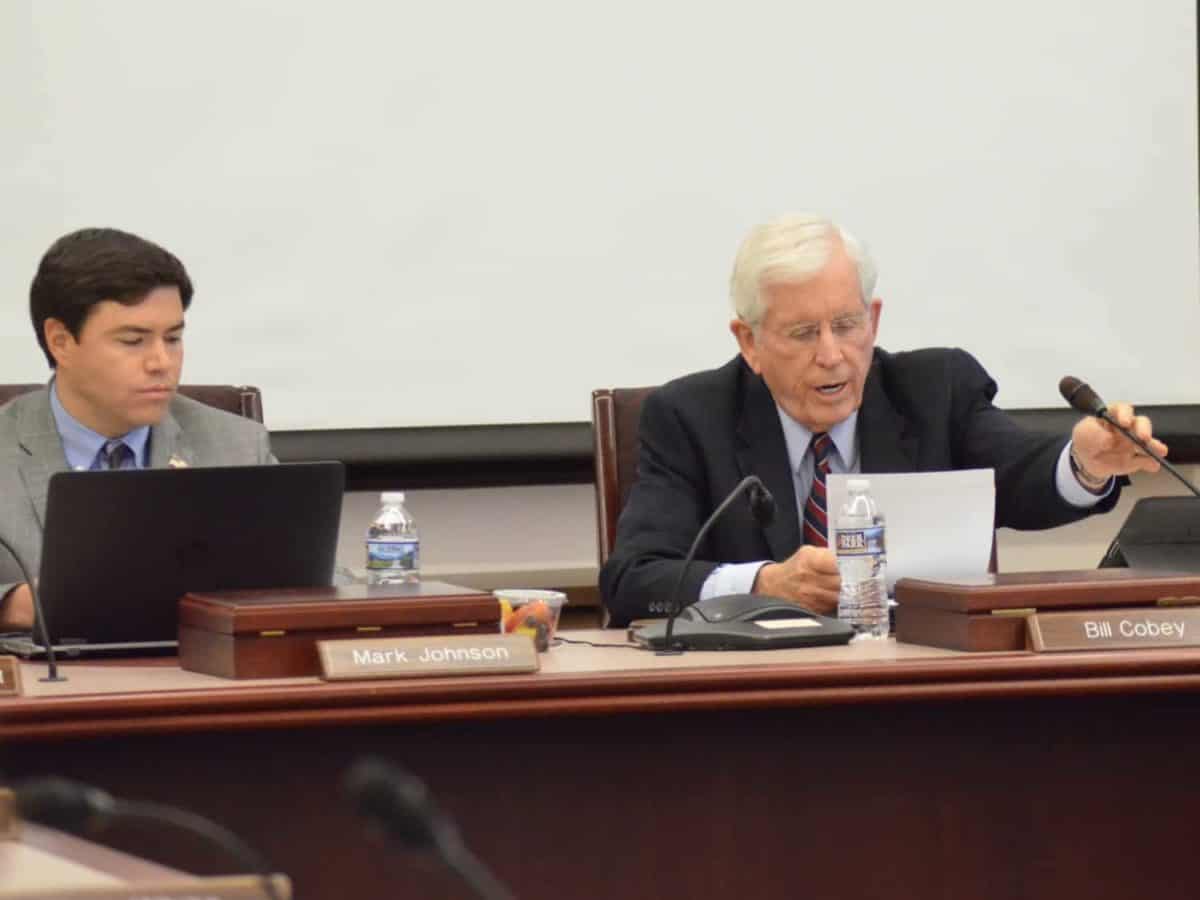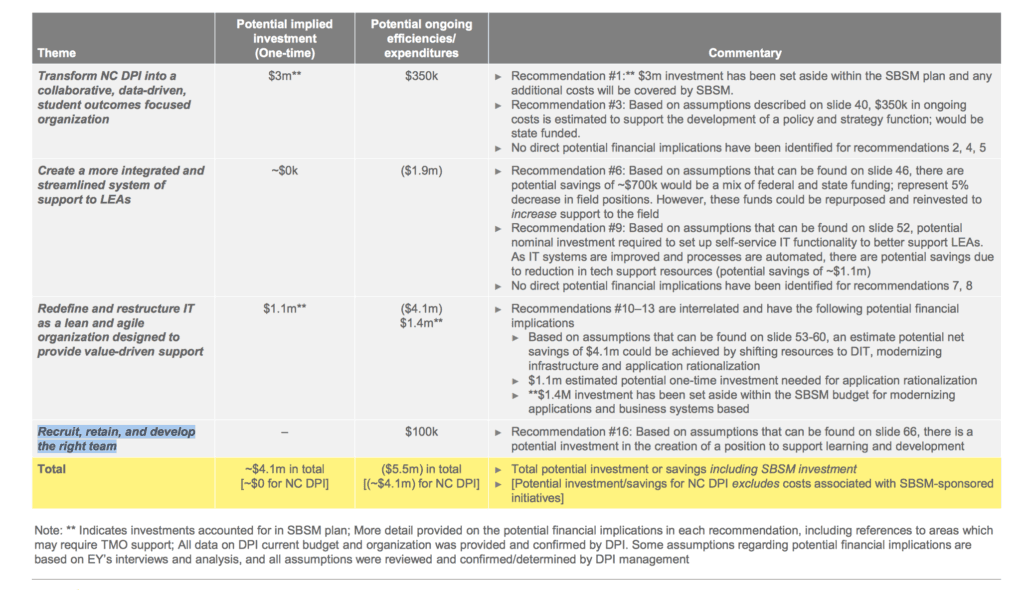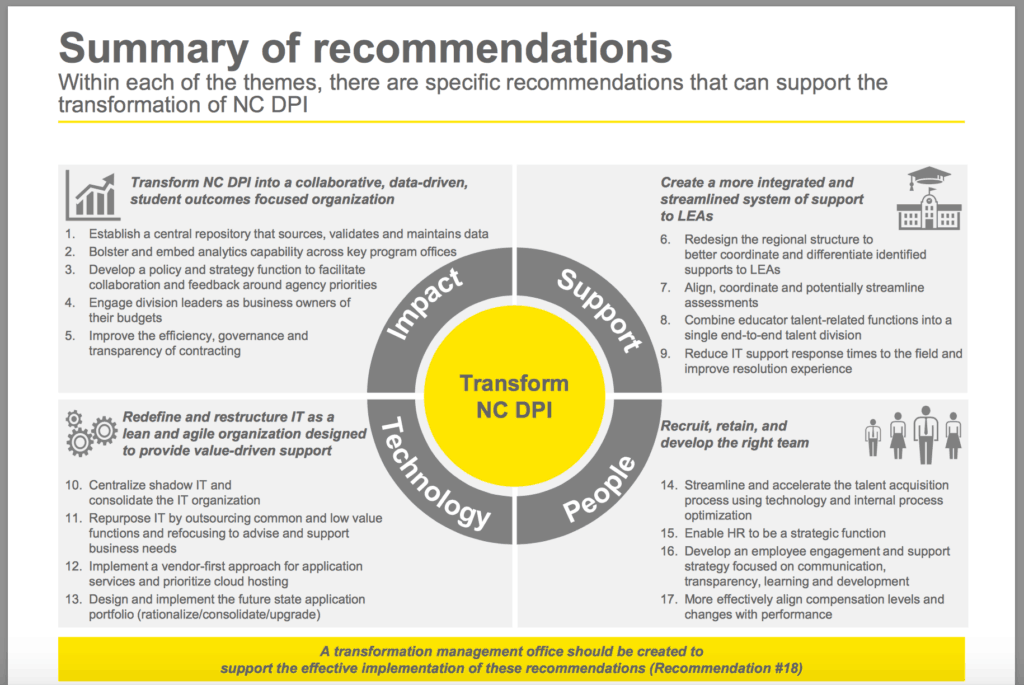

The State Board of Education heard details yesterday of an operational audit that offered a comprehensive vision of change for the state Department of Public Instruction, including a transformation management office and the potential for cost savings of more than $1 million.
The report has been in the works since Superintendent Mark Johnson was allocated $1 million for the audit by the General Assembly during the long session last year.
“I think everyone in the building knows that I was very excited and optimistic to have this work done,” Johnson said, adding that the review shows where the department is and where it could be going.
The audit was conducted by Ernst & Young over a 12-week period and included discussions with more than 100 DPI staff members and more than 100 outside “stakeholders” such as superintendents, principals, and teachers. It includes 18 recommendations of potential changes DPI could make to streamline operations, operate more efficiently, and increase impact. Some of those recommendations would cost money. Some would save money. And some would have no financial impact at all.
The report estimates that one-time expenditures of about $4.1 million would be needed do things such as, “Transform NC DPI into a collaborative, data-driven, student outcomes focused organization,” and “Redefine and restructure IT as a lean and agile organization designed to provide value-driven support.” However, the IT restructuring, along with streamlining support to local school districts could yield savings of about $5.5 million for the department.
Chris Librizzi, presenting the report on behalf of Ernst & Young, acknowledged those were just projections and that costs and savings might change depending on how implementation occurs.


Before launching into his review of the recommendations for change, Librizzi pointed out that while the audit focused on what could be done better, there were many areas where DPI was doing well. He pointed out that in some areas — federal programs monitoring, for example — the audit had no recommendations for improvement at all.
“There’s a lot of good that is happening here and some momentum that can be built on,” he said.
But there were a number of areas that needed work he said, and one of the overarching issues addressed by the audit was DPI’s tendency to be sectioned off, with isolated groups that did not work or share information effectively.
“The effectiveness and the impact that this organization can have is limited by its tendency to live in silos,” Librizzi said.
Other observations by Ernst & Young include that DPI “appears to lack an overriding theory for how to support LEAs (school districts) and educators to drive student incomes,” and “employee morale is widely perceived to be struggling amidst higher levels of turnover, fragmented communication, and uncertainty about the vision and future funding of the organization.”
The future funding of the organization is tied up in the fact that the General Assembly has been cutting DPI’s budget for years. Lawmakers delivered a $3.2 million cut for the current school year and more are slated for next year. In a cover sheet to the audit, which will be delivered to the General Assembly, the Board and Johnson will ask lawmakers to delay the $5.1 million in cuts that are mandated to take effect on July 1, 2018.
“Reductions of more than $5 million for next year will prevent the strategic implementation of thoughtful changes that will yield efficiencies over a multi-year period and improve NCDPI effectiveness on behalf of students,” the cover letter states.


Screen shot courtesy of DPI
The audit was conducted using the current budget of DPI, meaning further cuts may hamper the departments ability to institute any of the changes suggested.
Those changes are extensive, including efficiency and transparency of contracting, creating a central repository for data, aligning, coordinating, and maybe streamlining assessments, outsourcing some IT tasks, aligning compensation with performance, and creating a transformation management office to make it all happen. See the chart above for all the recommendations.
Some Board members expressed skepticism that the changes would yield the projected cost savings, or that other changes could happen without additional funds.
“I just don’t want anyone to think that it’s possible to do high quality work with fewer dollars,” said Board member Patricia Willoughby.
Librizzi was asked by multiple Board members to compare North Carolina’s education system to other states. He said North Carolina excels in some areas and is weaker in others when compared to other systems. But the problems inherent in the organization are not specific to the state.
“I would not say that any of the recommendations that we are making and the challenges we’ve observed are unique to this state,” he said.
The Board will hold a vote on sending the report to the General Assembly Thursday.


